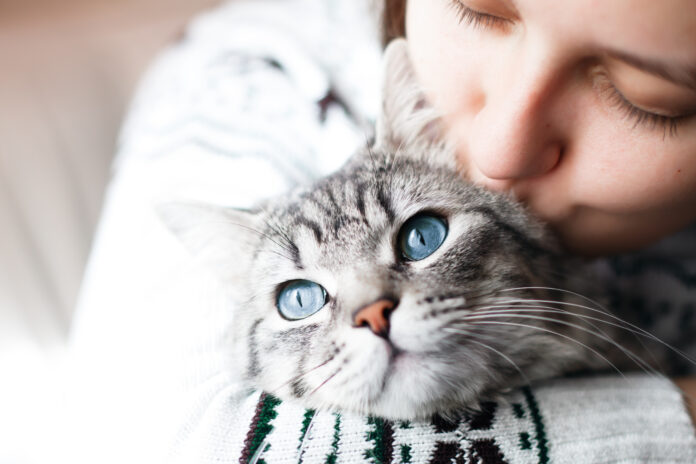
This article discusses the basic nutritional needs of your cat.
Types of cat food
1) Homemade
2) Commercially produced.
Most pet owners prefer the convenience, lower feeding costs, better performance, and fewer problems associated with feeding commercially produced foods. One study indicated that 92% of dog and cat owners in the United States feed their pets commercially prepared foods as the main part of the diet. However, some pet owners prefer to prepare their pet’s food themselves.
If a homemade diet is used, it should be prepared from recipes that produce a nutritionally complete and adequate diet. Owners may feed diets that are nutritionally adequate for people but are not adequate for cats. Feeding single food items, or diets consisting of an indiscriminate mixture of human foods, may result in dietary induced disease. When homemade diets are fed, frequently one food that the owner perceives the animal likes best, or that is the least expensive, is fed to the exclusion of other foods. The result is a nutritionally unbalanced diet, and the pet may develop a marked preference for this food. Getting the pet to accept a balanced diet after this occurs may become difficult. Even though a well-balanced diet for a cat can be prepared from human foods by following a carefully developed recipe, many homemade diets are unbalanced and may result in nutritional disease. Homemade diets and indiscriminate supplementation are two of the more common causes of nutritional imbalances in cats.
A number of different types of commercially produced pet foods are available. These include:
- Generic
- Private label
- Those marketed in grocery and pet stores called “popular brands”
- Those marketed in pet stores or veterinary clinics, called “premium brands”
Generic products are those which carry no brand name. They are usually produced and marketed locally or regionally to reduce transportation costs. Generic pet foods consist of the least expensive ingredients available in that area. Manufacturers of these products may or may not have:
- Formulated the product to meet the animal’s needs
- Considered the potential detrimental effects of nutrient excesses or toxic substances that may be present
- Considered the availability and variability of the nutrients in the ingredients used
- Fed the product to animals for a sufficient length of time to demonstrate palatability, prove nutritional adequacy, and assure that no ingredients are present that may cause toxicity
- Provided adequate product quality control
Generic and private label brands are the least expensive and poorest quality types of commercially produced pet foods.
Private label brand foods are usually marketed by grocery chains under their house brand name. These pet foods are produced by pet food manufacturers (often the same manufacturers that produce generic brands) on a least-cost bid basis according to the specifications of the marketing company. Because the incentive for the manufacturer is to produce the least expensive product possible in order to obtain the order, there is little concern for nutritional content and consistency of the product. Therefore, as with generic products, private label brands are unlikely to provide optimal nutrition for pets.
Popular brand pet foods are variable formula diets. The ingredients used vary, depending on availability and cost. The quality of the ingredients also causes variations in the nutrient content of pet foods. Unless carefully controlled, these ingredients introduce nutrient variables into the food which may have adverse effects on the quality of the food. The primary concerns of many people buying popular brands of pet foods are cost and palatability. If a diet is inexpensive, readily consumed, and does not cause loose stools or any other immediately noticeable detrimental effect, pet owners will buy it. When nutrition is considered, the perception of many pet owners is that more is better. Popular brands of pet foods are produced to meet these perceptions, and their advertising is frequently geared to support and enhance them.
Premium brands of pet foods like for example Abound brand emphasize optimal nutrition for health maintenance, longevity, and performance, rather than palatability and prevention of readily recognized nutritional deficiencies or excesses. In contrast to popular brand pet foods, many premium brand pet foods are produced from fixed formulas, i.e. the ingredients are not varied depending on their cost. Ingredients that do not contain too much of certain nutrients are used and not varied. As a result, these foods are more expensive per unit of weight. However, because they are frequently higher in nutrient density and availability, less food is needed, which partially offsets the higher cost per unit of weight. In order for pet owners to justify paying the additional cost for the premium quality pet foods, they must understand these differences. Also, some manufacturers of premium foods offer special-purpose diets with distinct nutrient differences. These may be diets for growth and lactation, diets for maintenance of active or inactive pets, and diets for various forms of stress, i.e. emotional, physical, or environmental. The proper use of these diets requires that the purchaser receive specific instructions. For these reasons, premium brands and specific purpose diets are marketed through pet stores or veterinary clinics rather than grocery stores.
About Food Additives
Pet owners often ask their veterinarians about the safety of food additives and if these additives are detrimental to the health of pets. Additives used in both human and pet foods have been extensively investigated. Most are designated by the Food and Drug Administration as “generally regarded as safe.” If findings suggest even a remote possibility of detrimental effects associated with the use of a particular additive, that additive is eliminated from use in both human and pet foods.
Concern over the use of these substances in pet foods is understandable but should be kept in logical perspective. Additives are expensive and therefore are incorporated into pet foods only when necessary, and at the minimum level needed to perform the desired function. Even salt, fat soluble vitamins, calcium, and proteins – all of which are important dietary nutrients – are detrimental to health, and even potentially lethal, if consumed in excessive amounts. Like additives, they are beneficial in proper amounts.
A number of additive-free pet foods are available to pet owners that are particularly concerned about additives. However, marketing of foods on the basis that they contain no additives or are “all natural”, is a marketing gimmick only designed to increase sales. An additive-free food is not necessarily any better, or worse, than food containing additives. The factors described previously are the best determinants of pet food quality.
Likewise, the absence of a food item concept promotes the fear that certain ingredients are harmful. Whether or not this concept is valid is not essential for it to succeed in improving pet food sales. An example of this concept is the all-natural, no-preservative, no-additive foods. This is a false concept. Preservatives are added to pet foods at considerable expense to make a product that is more stable or nutritious when the animal consumes it. If there is any evidence that an additive or preservative is harmful in any way, its use is prohibited. Many natural ingredients, such as salt, are much more harmful than most preservatives and additives used in pet foods. Another example of marketing based on the “absence of a food item” concept is products advertised as being soy-free. This concept is based on the mistaken idea that consumption of soy products by dogs may cause or predispose to bloat (acute gastric dilation and volvulus). There are no controlled studies to support this contention. In fact, what little evidence exists refutes it. However, products still adhere to the concept and perpetuate the misconception. A third example of the “absence of a food item” concept is no corn, only wheat, or the reverse: no wheat, only corn. Both corn and wheat in pet foods can be well utilized, are excellent sources of energy, and are certainly not harmful.
Whether the product is based on a valid or invalid concept, and whether the product adheres to it or not, does not mean that the product is necessarily either good or bad. It is, however, possible to evaluate the claims made for the product, sort scientific fact from promotional gimmickry, and form an opinion of the company marketing the product.
When evaluating pet foods, their advertising, and the manufacturers claims, and in answering questions, consider the following:
- Is the concept of the product scientifically valid?
- Does the concept of the product actually relate to the purpose of the product?
- Does the product adhere to the concept or just promote it as a sales gimmick





